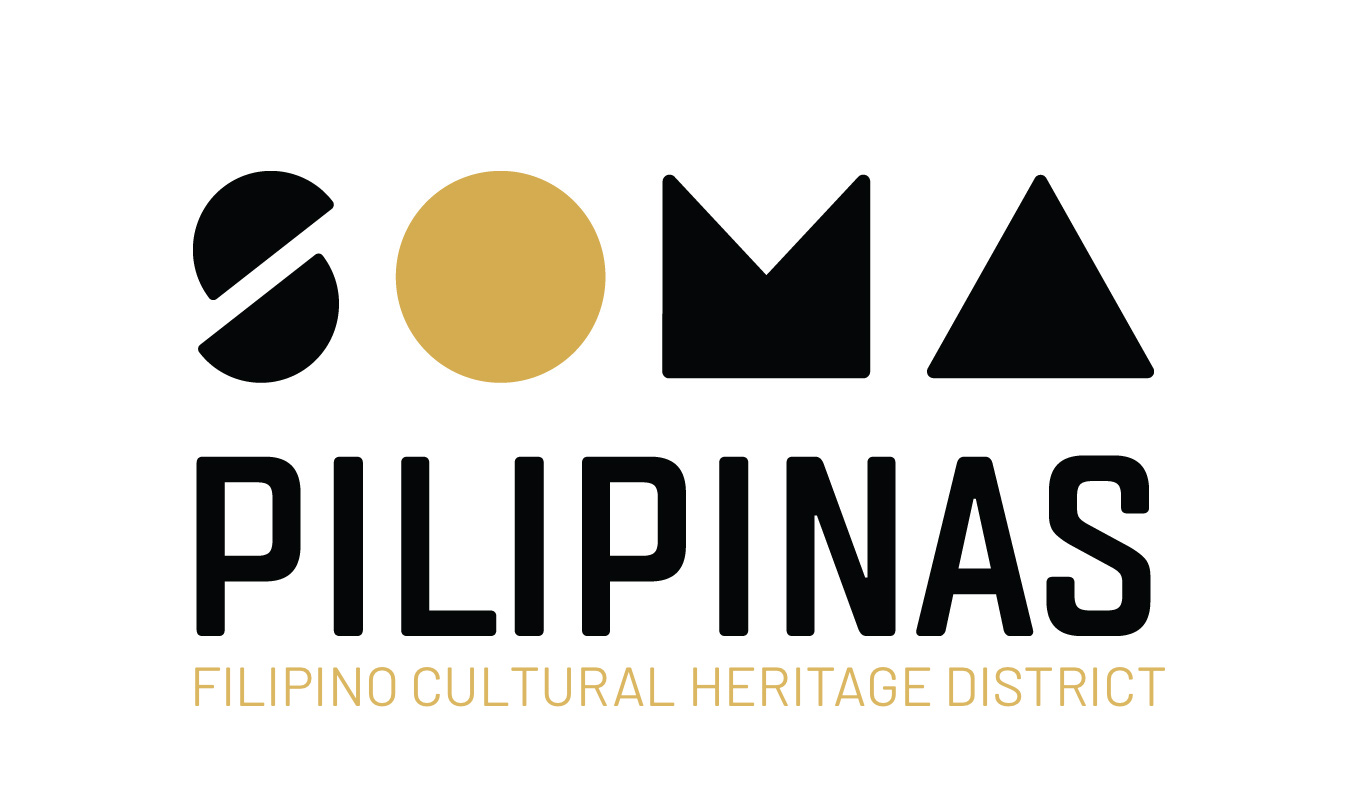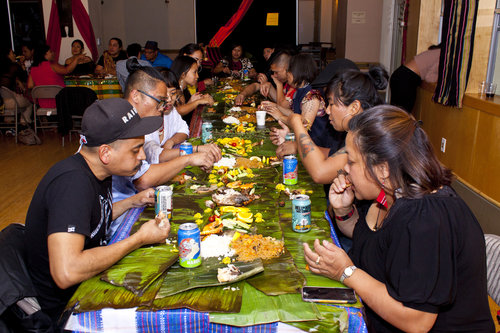KULARTS-SF Completes Three-Story Anthology Featuring “Heroes of the SOMA”

Co-creator, Don Ellis Aguillo (courtesy of In Hiatus Studios, photography by Danielle Rueda Photography)
Beginning in February, 2016, Kularts SF published comic books “The Clan of Saints Bay” and “Isugid Pinoy!”, both of which highlight Filipinx-American culture and struggles that face the community through superheroes in a world much like our own. A new edition in the SOMA Superheroes series will go to print at the end of July and will include the continuation of stories from the world of “Isugid Pinoy!”, as well as a third, new story. This Kularts series was illustrated and designed by co-creators Don Ellis Aguillo and Rafael “Raf” Salazar of In Hiatus Studios.
The new three-story anthology, as in previous titles, is heavily influenced by real-life community members and events. Arkipelago Bookstore, Bindlestiff Studios, and West Bay Pilipino Multi Service Center, all partners of SOMA Pilipinas, will have the spotlight on them, each in their own action-packed stories.
Co-creator, Rafael "Raf" Salazar (courtesy of In Hiatus Studios, photography by Danielle Rueda Photography)
“A series of interviews with the heroes of the SoMa has taken us on a historical lesson of the community's struggles and its current development under a rapidly changing urban environment. We've masked names and organizations within the narrative fabric, but we've used likenesses and the information they've provided us in rounding out the content of the stories and grounding them in something familiar and believable,” explained Aguillo. For the new anthology, Aguillo and Salazar spent days and even weeks with the organizations to get a personal look at the work being done there. Salazar added, “We didn’t have a story before those interviews. Just talking with them and learning their experiences in their groups, basically, informed what kind of story we were supposed to tell.”
Beyond making more personal connections with organizations this time around, Aguillo and Salazar invited members of the community to have a more direct impact on the creative process. The West Bay Pilipino Multi Service Center has worked in the community for almost 50 years providing youth with academic enrichment and mentorship. They are also the inspiration for one of the new stories in the anthology, “The West Bloc Qa-Zins”. West Bay’s Executive Director, Carla Laurel, commented, “The Kularts comics give a voice and face to the people living and working in SOMA Pilipinas in a fun, unique, and mainstream way.”
For two weeks, Raf Salazar followed four youth counselors to gain the inspiration for the new story. Laurel emphasized that she did not have much influence in the creative process. “To be honest, it was really important for me not to be a part of the process at all. It was a comic made by the youth we serve and staff we have that live and work in the community... This comic is theirs,” she recounted. She also praised the efforts by Kularts to involve the community and youth: “Filipino-American youth in SOMA, especially, have a voice that needs to be heard and a story that needs to be told. They are filled with wisdom, hope, forgiveness, and resilience.”
It is clear that Kularts intends to preserve and pass on stories of the SOMA, and the comic book format presents a new strategy to do so.
Aguillo explained the use of this medium stating, “I don't personally think that the comic medium is relatively new, I just believe that it's validity and value have only recently been acknowledged […] We're using it now because it is Raf and my vocabulary in terms of our professional work and mode of storytelling, and as usual, Kularts has singled out this medium as a different way of telling important stories and to effectively reach new/wider audiences and make those stories more accessible and perhaps in a more engaging, exciting way.
“We've come in league with artists in the SoMa community who we hope have awakened to their own visual storytelling process and maybe the comics medium is a part of or can be a part of their own process,” he later added.
Salazar, who got his start doing webcomics, shared an insight on the comic book format: “One of the reasons I like the webcomic format is that the webcomic format isn’t necessarily tied to a beginning and an end. It’s looser. It can go anywhere… With these comics, especially telling these stories, because they’re inspired by these real people and these real things that are happening in these lives, and it’s not over. So I think comics is a great way to just keep it going.” The serial nature of comic books mirrors the ongoing work of the SOMA Pilipinas community.
Superhero movies continue to saturate the box office, and Kularts may have picked up on a collective desire to find heroic traits in ourselves. When asked who these comic books are targeted to, Aguillo answered, “All ages, particularly those in our community who don't know our heroes therein, the heroes themselves who don't see themselves as such, and those in our community who are adversarial to the principles and sensibilities of the SoMa, who can begin to see the struggle the community undergoes in a different way.”
Salazar added, “I don’t want it to be just for Filipinos. I want it to be for everyone because I like to hope that, even though these stories are specifically [members of the Filipino-American community], that it can be relatable to everyone else.”
Among the target audience of SOMA residents, Aguillo made sure to mention, “[T]he reason we’re telling these stories is because there is activism necessary in this area. And so hopefully, the people that are creating the challenges for this community also get to see or read the experience, possibly more accessible through the work we’re trying to do.”
The co-creators were reluctant to reveal much about any new characters, but Salazar did have this to say about writing the villains: “The villain, I think, is the hardest part because that’s the one person we didn’t interview. Everyone else, even though it’s fiction, everyone’s like ‘Oh, that’s me, but it’s not me.’ To write a bad guy, to write a real villain, it’s really hard because it doesn’t feel fair. But we have to do that sometimes.” Judging from previous comics, the villains are likely to embody real-life challenges for people in the South of Market.
The narratives gathered and restitched by Kularts represent a need for the experiences of the community to be told and retold. The “Isugid Pinoy!” comic book series helps validate our struggles and victories, and will serve to carry on important lessons for future advocates of SOMA Pilipinas. In fact, these comics have already made a strong impression with the youth in SOMA.
Ramon Bonifacio of the Youth Organizing Home and Neighborhood Action (YOHANA), a senior at Mission High School, appreciated seeing representation of his community in comic books for the first time. “I’m always seeing the Avengers and Marvel’s comics, but I’ve never seen Filipino or community heroes, which is actually real cool,” Bonifacio remarked.
His favorite characters resemble community members he knows: “...Kuya Ray, his power is to duplicate himself. I know Ate Gel is the one who teleports everywhere.” Seeing representation in media like the comics from Kularts encourages readers to do good work in their communities. Bonifacio explained, “Those comic books are inspiring because you see that the characters in [the books] are actually real people that are actually doing work in the community.”
The new anthology is out, Friday, July 27. You can find it at Arkipelago Bookstore and future Undiscovered Night Markets, as well as other Kularts events.








